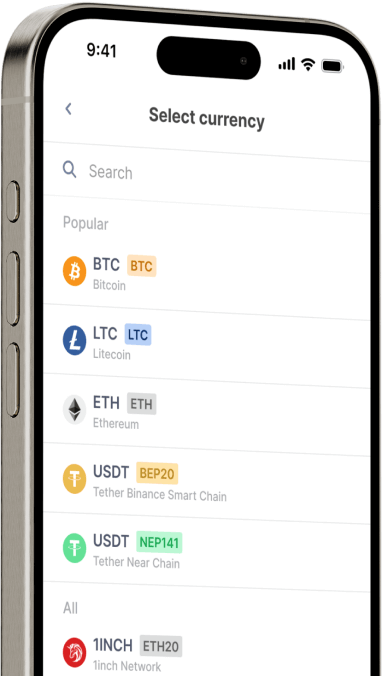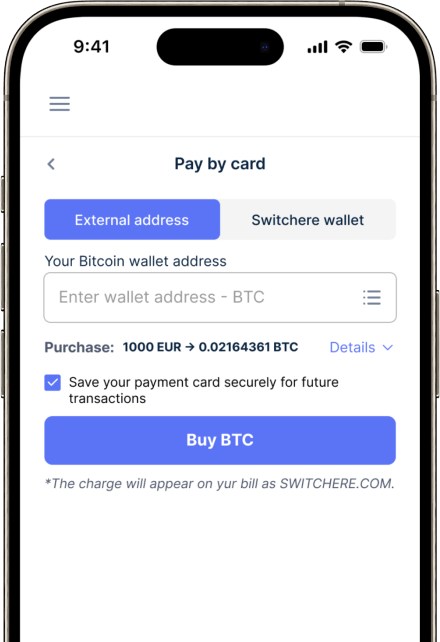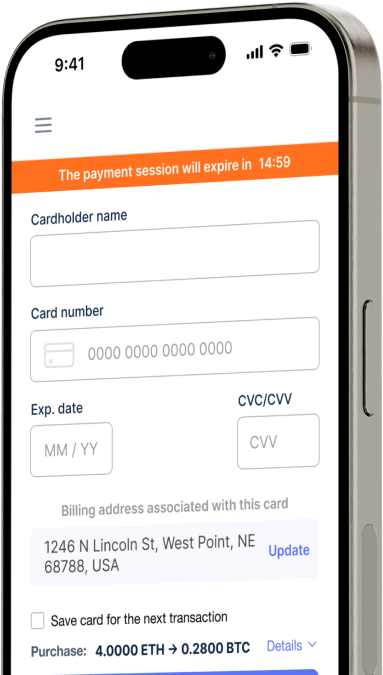Convertissez
Danish Krone (DKK) en Cartesi (CTSI) instantanément
Achetez Cartesi (CTSI) avec Danish Krone (DKK) facilement sur Switchere et bénéficiez de transactions rapides et sécurisées.
A propos de
Cartesi (CTSI)
Cartesi (CTSI) est une plateforme d'infrastructure de couche 2 conçue pour résoudre le problème critique de l'évolutivité computationnelle et des coûts élevés sur les réseaux blockchain. Souvent appelé « L'OS de la Blockchain », son objectif principal est de permettre la création d'applications décentralisées (dApps) d'une complexité rivalisant avec leurs homologues centralisées du Web2. Cartesi y parvient en permettant aux développeurs de construire des contrats intelligents et des dApps dans un environnement de système d'exploitation Linux complet, en utilisant des langages de programmation et des piles logicielles grand public. Cette approche abaisse considérablement la barrière à l'entrée pour les développeurs passant du Web2 au Web3, favorisant un écosystème de dApps plus riche et plus puissant, bâti sur une technologie blockchain robuste.
Le cœur de la plateforme est la Machine Cartesi (CM), une machine virtuelle déterministe qui exécute des calculs intensifs hors chaîne (off-chain). En tirant parti des Optimistic Rollups, Cartesi peut traiter ces calculs complexes en externe tout en ancrant les résultats avec une sécurité cryptographique sur la blockchain de couche 1 sous-jacente, comme Ethereum. Ce modèle hybride offre l'immense puissance de calcul du traitement off-chain avec la confiance vérifiable d'un registre numérique on-chain. Le jeton utilitaire natif, CTSI, fait partie intégrante de la tokenomie du réseau. Il est utilisé pour le staking au sein de la sidechain Noether Proof-of-Stake (PoS) de Cartesi, où les opérateurs de nœuds aident à sécuriser le réseau et gagnent des récompenses. Le CTSI fonctionne également comme méthode de paiement pour les services de calcul et de disponibilité des données au sein de l'écosystème.
Acheter d'autres 150+ crypto-monnaies pour Danish Krone (DKK)
Autres pièces pour Danish Krone (DKK)
-
DKK pour ZRX
-
DKK pour 1INCH
-
DKK pour AAVE
-
DKK pour ACH
-
DKK pour ALGO
-
DKK pour TLM
-
DKK pour ANKR
-
DKK pour APE
-
DKK pour NFT
-
DKK pour API3
-
DKK pour APT
-
DKK pour ARPA
-
DKK pour AUDIO
-
DKK pour AVAX
-
DKK pour AVAX
-
DKK pour AXS
-
DKK pour BADGER
-
DKK pour BAL
-
DKK pour BNT
-
DKK pour BAT
-
DKK pour BNB
-
DKK pour BSW
-
DKK pour BSV
-
DKK pour BLUR
-
DKK pour BONE
-
DKK pour CTSI
-
DKK pour CELR
-
DKK pour CELO
-
DKK pour CEL
-
DKK pour LINK
-
DKK pour CHZ
-
DKK pour CHR
-
DKK pour C98
-
DKK pour COMP
-
DKK pour CFX
-
DKK pour PEOPLE
-
DKK pour CVX
-
DKK pour ATOM
-
DKK pour CTC
-
DKK pour CRV
-
DKK pour DAI
-
DKK pour DASH
-
DKK pour MANA
-
DKK pour DENT
-
DKK pour DGB
-
DKK pour DYDX
-
DKK pour XEC
-
DKK pour EOS
-
DKK pour ETC
-
DKK pour ENS
-
DKK pour ETHW
-
DKK pour FET
-
DKK pour FIL
-
DKK pour FLOKI
-
DKK pour GALA
-
DKK pour GNO
-
DKK pour ONE
-
DKK pour HBAR
-
DKK pour HOT
-
DKK pour HOOK
-
DKK pour ICX
-
DKK pour ILV
-
DKK pour IMX
-
DKK pour INJ
-
DKK pour ICP
-
DKK pour IOST
-
DKK pour IOTX
-
DKK pour JASMY
-
DKK pour JST
-
DKK pour KAVA
-
DKK pour KCS
-
DKK pour KSM
-
DKK pour KNC
-
DKK pour LDO
-
DKK pour LQTY
-
DKK pour LPT
-
DKK pour LOOKS
-
DKK pour LRC
-
DKK pour LUNA
-
DKK pour MKR
-
DKK pour MASK
-
DKK pour EGLD
-
DKK pour ALICE
-
DKK pour NEAR
-
DKK pour XEM
-
DKK pour NEXO
-
DKK pour NOT
-
DKK pour NMR
-
DKK pour OKB
-
DKK pour OMG
-
DKK pour ONT
-
DKK pour EDU
-
DKK pour OP
-
DKK pour OGN
-
DKK pour CAKE
-
DKK pour PAXG
-
DKK pour PENDLE
-
DKK pour DOT
-
DKK pour POL
-
DKK pour QTUM
-
DKK pour QNT
-
DKK pour RDNT
-
DKK pour XRD
-
DKK pour RVN
-
DKK pour REN
-
DKK pour RSR
-
DKK pour RLC
-
DKK pour RPL
-
DKK pour SFP
-
DKK pour SHIB
-
DKK pour SKL
-
DKK pour SXP
-
DKK pour STND
-
DKK pour STG
-
DKK pour XLM
-
DKK pour GMT
-
DKK pour STORJ
-
DKK pour STMX
-
DKK pour SUSHI
-
DKK pour SNX
-
DKK pour USDT (Polygon)
-
DKK pour USDT (AVAC)
-
DKK pour USDT (BEP20)
-
DKK pour USDT (ERC20)
-
DKK pour USDT (SPL)
-
DKK pour USDT (NEP141)
-
DKK pour USDT (FA2)
-
DKK pour USDT (TRC20)
-
DKK pour USDT (JETTON)
-
DKK pour XTZ
-
DKK pour GRT
-
DKK pour SAND
-
DKK pour TFUEL
-
DKK pour THETA
-
DKK pour RUNE
-
DKK pour TON
-
DKK pour TUSD (BEP20)
-
DKK pour TUSD (TRC20)
-
DKK pour TWT
-
DKK pour UOS
-
DKK pour UMA
-
DKK pour UNI
-
DKK pour USDC (Polygon)
-
DKK pour USDC (SPL)
-
DKK pour USDC (OP)
-
DKK pour USDC (BEP20)
-
DKK pour USDC (AVAC)
-
DKK pour USDC (ARB)
-
DKK pour USDC (ERC20)
-
DKK pour VET
-
DKK pour VRA
-
DKK pour WAXP
-
DKK pour WOO
-
DKK pour WLD
-
DKK pour WBTC
-
DKK pour WMINIMA
-
DKK pour XDC
-
DKK pour YFI
-
DKK pour YGG
-
DKK pour ZIL
Comment acheter des Cartesi (CTSI)
Questions fréquemment posées
-
Quelles sont les méthodes les plus courantes pour acheter du Cartesi (CTSI) avec des couronnes danoises (DKK) ?
Pour acheter du Cartesi (CTSI) avec des couronnes danoises (DKK), les méthodes de rampe d'accès fiat les plus courantes consistent à utiliser une plateforme d'échange de cryptomonnaies réglementée qui dessert les clients au Danemark. En général, cela implique un virement bancaire en DKK, qui est sécurisé mais peut prendre 1 à 2 jours ouvrables. Certaines plateformes peuvent également prendre en charge des options de paiement plus rapides comme les achats par carte de débit/crédit, bien que celles-ci puissent entraîner des frais plus élevés. Toutes les plateformes réputées exigeront une conformité KYC/AML avant que vous puissiez exécuter la transaction de DKK à CTSI.
-
Après avoir acquis des CTSI avec des DKK, quelle est la principale utilité du jeton au sein du réseau Cartesi ?
Une fois que vous convertissez vos DKK en CTSI, le jeton remplit plusieurs fonctions au sein de l'écosystème Cartesi. Son utilité principale est d'alimenter la solution de couche 2 du réseau. Le CTSI est utilisé pour les frais de transaction au sein des Cartesi Rollups et comme jeton de staking dans le système de preuve d'enjeu (PoS) Noether de Cartesi. En stakant des CTSI, les utilisateurs peuvent aider à sécuriser le réseau et gagner des récompenses, participant ainsi directement au modèle de sécurité décentralisé du réseau.
-
Comment la technologie de couche 2 de Cartesi, telle que les Optimistic Rollups, impacte-t-elle la valeur des CTSI achetés avec des DKK ?
Bien que l'achat initial de DKK en CTSI se produise sur une blockchain de couche 1 comme Ethereum, la technologie sous-jacente de Cartesi, en particulier son utilisation des Optimistic Rollups, est fondamentale pour la proposition de valeur du jeton. Cette solution de couche 2 permet une évolutivité de calcul massive et des frais réduits pour les dApps construites sur Cartesi en effectuant des calculs complexes hors chaîne dans un environnement Linux. Cet avantage technique attire plus de développement et d'utilisation, ce qui peut stimuler la demande et l'utilité du jeton CTSI que vous avez acquis.
-
Pourquoi la paire de trading DKK/CTSI est-elle pertinente pour les développeurs familiers avec les logiciels grand public ?
La paire DKK/CTSI fournit une passerelle fiat directe pour les développeurs danois vers l'écosystème Cartesi, qui est conçu de manière unique pour combler le fossé entre la blockchain et le développement logiciel conventionnel. En tirant parti de la Cartesi Machine, qui est une machine virtuelle Linux, les développeurs peuvent créer des applications décentralisées (dApps) en utilisant les piles logicielles grand public qu'ils connaissent déjà. Cela abaisse la barrière à l'entrée pour la création de dApps complexes et gourmandes en calcul, faisant du CTSI un actif numérique stratégique pour les développeurs.
-
Quelles sont les pratiques de sécurité clés pour convertir des DKK en actifs numériques CTSI ?
Lors de la conversion de DKK en CTSI, donnez la priorité à la sécurité. Utilisez toujours une plateforme d'échange de cryptomonnaies réputée avec des fonctionnalités de sécurité robustes comme l'authentification à deux facteurs (2FA). Après l'achat, il est fortement recommandé de transférer vos CTSI du portefeuille de la plateforme d'échange vers un portefeuille numérique personnel non dépositaire où vous contrôlez les clés privées. Pour des montants importants, un portefeuille matériel offre le plus haut niveau de sécurité pour stocker vos actifs numériques à long terme et vous protéger contre les risques spécifiques à la plateforme.
-
À quels frais et délais de traitement peut-on s'attendre lors de l'échange de couronnes danoises (DKK) contre des Cartesi (CTSI) ?
Lors de l'échange de DKK contre des CTSI, attendez-vous à plusieurs frais potentiels. Ceux-ci incluent des frais de dépôt pour vos DKK, des frais de transaction sur la plateforme d'échange de cryptomonnaies (souvent un pourcentage du volume de la transaction) et des frais de retrait pour déplacer vos CTSI vers un portefeuille privé. Les délais de traitement varient selon le mode de paiement : les virements bancaires en DKK prennent généralement 1 à 2 jours ouvrables pour être compensés, tandis que les paiements par carte de débit ou de crédit sont presque instantanés mais entraînent généralement des coûts plus élevés. La transaction finale sur la blockchain pour transférer les CTSI a également des frais de réseau, qui fluctuent en fonction de la congestion du réseau.




